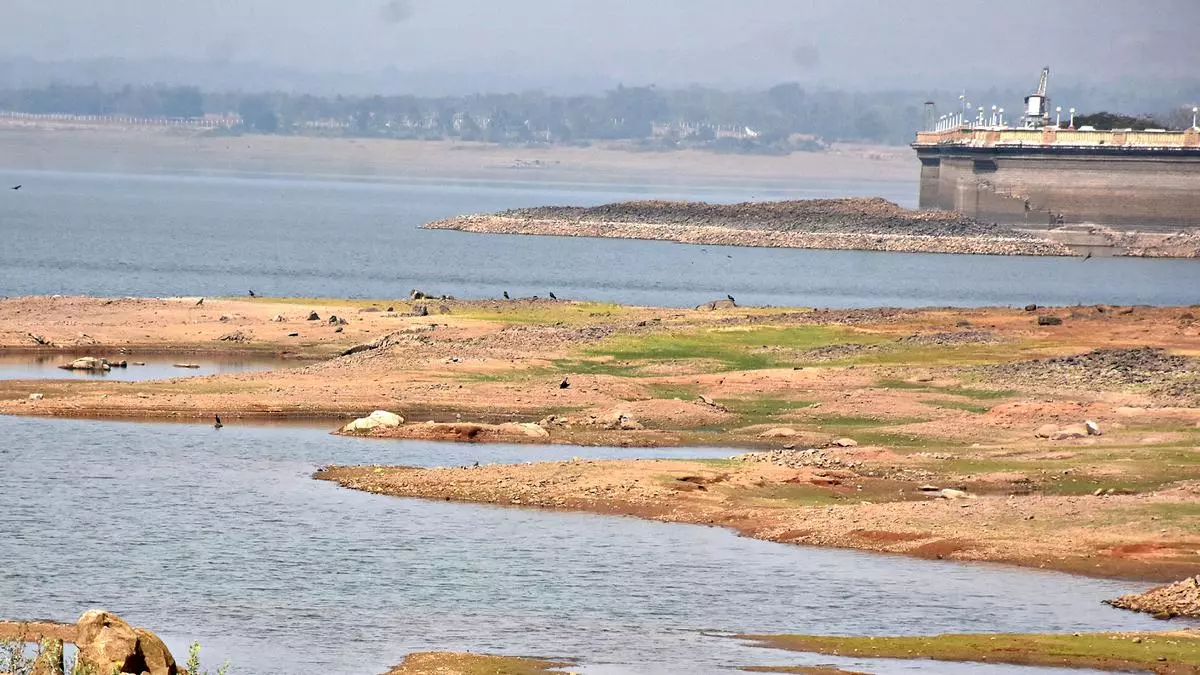Storage in South Indian reservoirs plunges to 20% of capacity
The water level in the 42 major South Indian reservoirs dropped to 20 per cent of the capacity with the storage in 37 of them dipping to below 50 per cent the capacity this week.
The Central Water Commission (CWC) in its weekly bulletin on live storage status of the 150 major Indian reservoirs said the storage in the southern region declined to 10.571 billion cubic metres (BCM) of the 53.334 BCM capacity.
During the period a year ago, the level was 34 per cent and the average storage over the past 10 years is 28 per cent. Five of the reservoirs in the region have gone dry, while another six could also see the levels declining to zero if there is no rainfall over the next few days.
Level 35% of capacity
A third of the reservoirs in the country whose levels have dropped below 50 per cent is in the southern region. Among the States, the situation is precarious in Andhra Pradesh, where the storage declined to 9 per cent of the capacity with the levels being 75 per cent lower than normal.
The level in Tamil Nadu is 38 per cent below normal and in Karnataka it is 22 per lower than normal.
According to the CWC’s weekly bulletin, the storage in the major 150 reservoirs was 35 per cent of the 178.784 BCM at 61.801 BCM. The storage was 83 per cent of the capacity last year and the average level in the past 10 years is 98 per cent. The storage is lower across the regions, barring the eastern one. It is for the 26th week in a row that the level had dipped.
The level in 88 of the major reservoirs is below 40 per cent of the capacity and in another 29 it is below 40 per cent. The storage level in Indian reservoirs has become a major concern this year as the country has been going through a dry period since June 2023 with the emergence of the El Nino.
Though the El Nino is dissipating and is expected to turn neutral by June, the maximum temperatures across most of the country is higher than normal. The lower storage has resulted in some parts of Karnataka — particularly Bengaluru —, Telangana and Andhra Pradesh facing water shortage, including lack of groundwater.
Bihar 78% below normal
Of the 10 reservoirs in the northern region with a capacity of 19.663 BCM, the level this week was 6.338 BCM or 32 per cent. This is marginally lower than the 33 per cent average storage in the past 10 years. In Punjab and Rajasthan, the storage was 7 per cent and 10 per cent of the capacity, respectively.
In the eastern region, the storage in the 23 reservoirs was 45 per cent of the 20.430 BCM capacity at 9.242 BCM. The level in Bihar was 78 per cent below normal — the highest in the country, while in Bengal and Nagaland it was 24 per cent and 8 per cent lower than normal, respectively.
The storage in the 49 reservoirs in the western region was 40 per cent of the 37.130 BCM capacity at 14.835 BCM. In Maharashtra, the level was 11 per cent lower than normal.
Of the 26 reservoirs in the central region, the level was 43 per cent of the 48.227 BCM capacity at 20.815 BCM. The storage in Uttar Pradesh and Chhattisgarh was 27 per cent and 24 per cent below normal, respectively.
With the India Meteorological Department predicting higher than normal temperatures during April-May, the situation could turn more worrisome.
